Serving 800 students in grades 6-8, Mannheim Middle School ranks in the bottom 50% of all schools in Illinois for overall test scores (math proficiency is bottom 50%, and reading proficiency is bottom 50%).
The percentage of students achieving proficiency in math is 13% (which is lower than the Illinois state average of 28%). The percentage of students achieving proficiency in reading/language arts is 19% (which is lower than the Illinois state average of 30%).
The student:teacher ratio of 11:1 is lower than the Illinois state level of 13:1.
Minority enrollment is 91% of the student body (majority Hispanic), which is higher than the Illinois state average of 55% (majority Hispanic).
Quick Stats (2025)
- Grades: 6-8
- Enrollment: 800 students
- Student:Teacher Ratio: 11:1
- Minority Enrollment: 91%
- Overall Testing Rank: Bottom 50% in IL
- Math Proficiency: 13% (Btm 50%)
- Reading Proficiency: 19% (Btm 50%)
- Science Proficiency: 46% (Btm 50%)
- Source: National Center for Education Statistics (NCES), IL Dept. of Education
Top Rankings
Mannheim Middle School ranks among the top 20% of public schools in Illinois for:
Category
Attribute
Student Attention
School Overview
Mannheim Middle School's student population of 800 students has declined by 14% over five school years.
The teacher population of 74 teachers has grown by 13% over five school years.
Grades Offered
Grades 6-8
Total Students
800 students
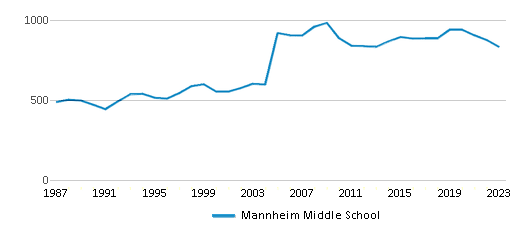
Gender %
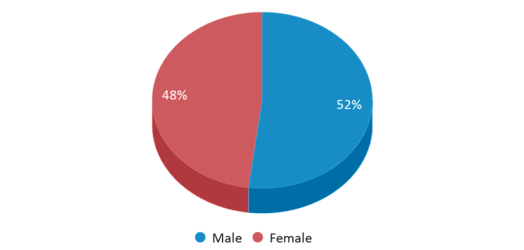
Total Classroom Teachers
74 teachers
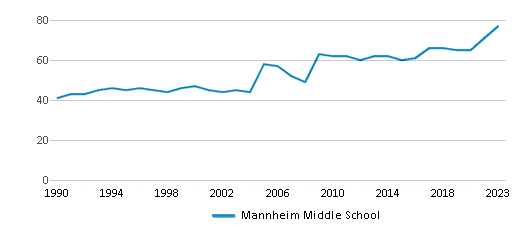
Students by Grade
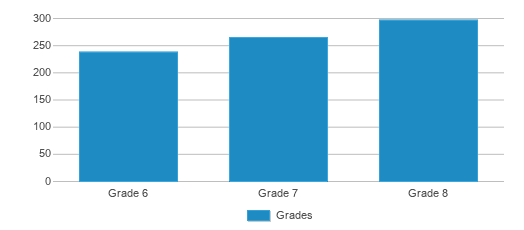
School Calendar
School Rankings
Mannheim Middle School ranks within the bottom 50% of all 3,426 schools in Illinois (based off of combined math and reading proficiency testing data).
The diversity score of Mannheim Middle School is 0.24, which is less than the diversity score at state average of 0.70. The school's diversity has stayed relatively flat over five school years.
Overall Testing Rank
#2317 out of 3426 schools
(Bottom 50%)
(Bottom 50%)
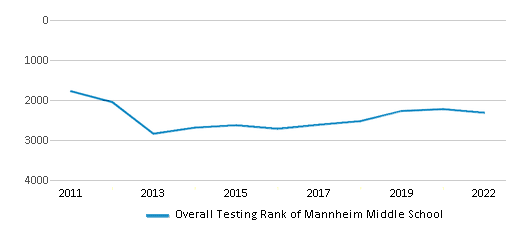
Math Test Scores (% Proficient)
(20-21)13%
28%
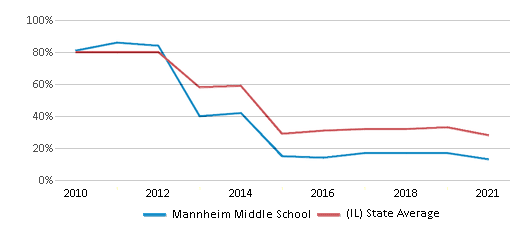
Reading/Language Arts Test Scores (% Proficient)
19%
30%
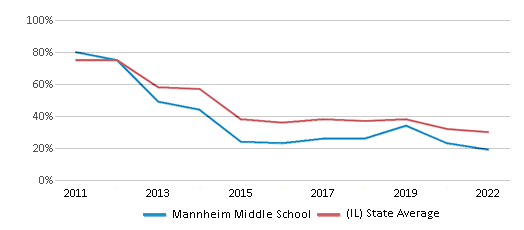
Science Test Scores (% Proficient)
46%
50%
Student : Teacher Ratio
11:1
13:1
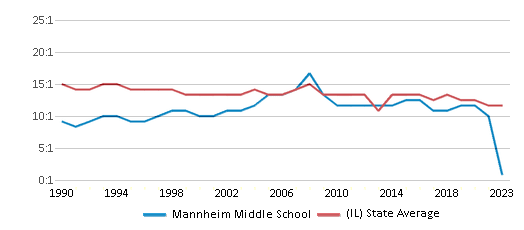
American Indian
n/a
1%
Asian
2%
6%
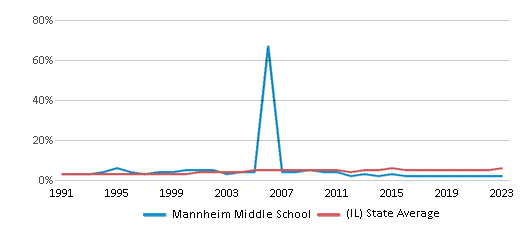
Hispanic
87%
28%
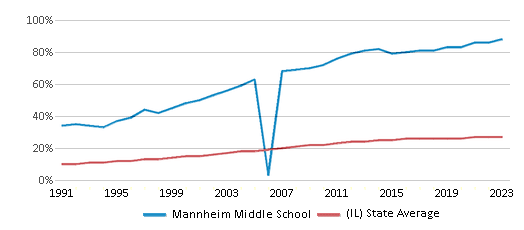
Black
1%
16%
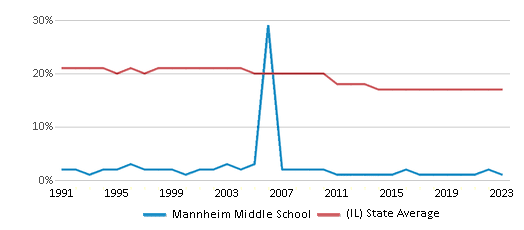
White
9%
45%
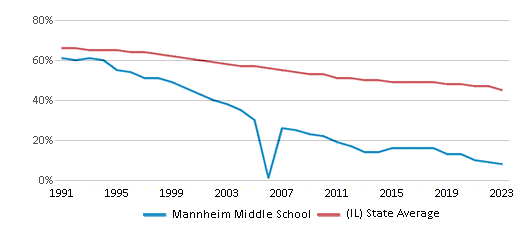
Hawaiian
n/a
n/a
Two or more races
1%
4%
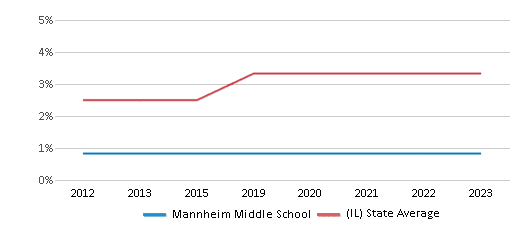
All Ethnic Groups
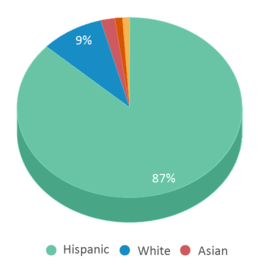
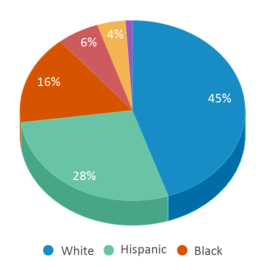
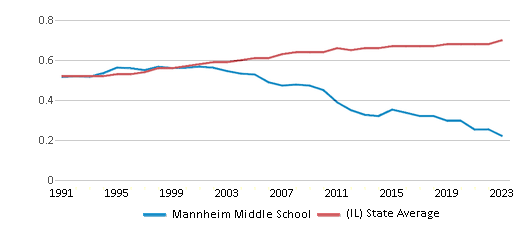
Eligible for Free Lunch
60%
43%
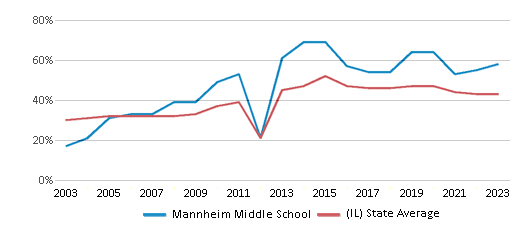
Eligible for Reduced Lunch
28%
4%
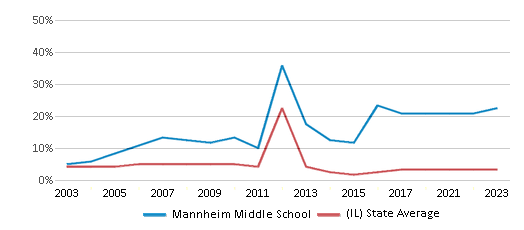
School Statewide Testing
School District Name
Source: National Center for Education Statistics (NCES), IL Dept. of Education
Profile last updated: 02/09/2025
Frequently Asked Questions
What is Mannheim Middle School's ranking?
Mannheim Middle School is ranked #2317 out of 3,426 schools, which ranks it among the bottom 50% of public schools in Illinois.
What percent of students have achieved state testing proficiency in math and reading?
13% of students have achieved math proficiency (compared to the 28% IL state average), while 19% of students have achieved reading proficiency (compared to the 30% IL state average).
How many students attend Mannheim Middle School?
800 students attend Mannheim Middle School.
What is the racial composition of the student body?
87% of Mannheim Middle School students are Hispanic, 9% of students are White, 2% of students are Asian, 1% of students are Black, and 1% of students are Two or more races.
What is the student:teacher ratio of Mannheim Middle School?
Mannheim Middle School has a student ration of 11:1, which is lower than the Illinois state average of 13:1.
What grades does Mannheim Middle School offer ?
Mannheim Middle School offers enrollment in grades 6-8
What school district is Mannheim Middle School part of?
Mannheim Middle School is part of Mannheim SD 83 School District.
School Reviews
5 4/9/2022
I think this school is great, the teachers are welcoming and always make it clear that you can open up to them. At least my teachers do. The methods of teaching are so different among teachers, some are kinesthetic and some are verbal. Not all students learn the same but I'm sure the teachers try their best to help every child. Mental health is discussed every week and I really appreciate it. My friends are the best and I wouldn't have gotten this close to them if I didn't go here. I will admit some students here don't respect the building and I've heard about people getting suspended for taking things and such. But it really isn't the school's fault. The opportunities for students here are endless as well. There are so many sports teams like basketball, volleyball, soccer, etc. There is cheerleading and many, many different clubs for so many different people. I am indifferent clubs 4 days a week morning and after school and I love it. There is a club for everyone and the staff works hard to make the school a relatable, welcoming place. I know I might be biased but I really love this school.
1 6/26/2021
Most teachers didn't seem to like their job, and the ones who did would play favorites or just weren't very nice. It was also really hard to grow academically, teachers never pushed the students who exceeded in school to do better, you were sort of held back with everyone else.
1 3/27/2020
This needs a better algorithm and should teach how to be creative and adapt to changes in the real world in order to be successful. Tests and stuff that has already been learned is not needed because we have things like google and siri not teachers stuff a robot already knows.
2 5/11/2009
Teachers do not meet expectations.
Review Mannheim Middle School. Reviews should be a few sentences in length. Please include any comments on:
- Quality of academic programs, teachers, and facilities
- Availability of music, art, sports and other extracurricular activities
Recent Articles

What Is A Charter School?
Explore the world of charter schools in this comprehensive guide. Learn about their history, how they operate, and the pros and cons of this educational innovation. Discover key facts about charter schools, including admission policies, demographics, and funding, as well as what to look for when considering a charter school for your child.

10 Reasons Why High School Sports Benefit Students
Discover the 10 compelling reasons why high school sports are beneficial for students. This comprehensive article explores how athletics enhance academic performance, foster personal growth, and develop crucial life skills. From improved fitness and time management to leadership development and community representation, learn why participating in high school sports can be a game-changer for students' overall success and well-being.

February 05, 2025
Understanding the U.S. Department of Education: Structure, Impact, and EvolutionWe explore how the Department of Education shapes American education, from its cabinet-level leadership to its impact on millions of students, written for general audiences seeking clarity on this vital institution.









